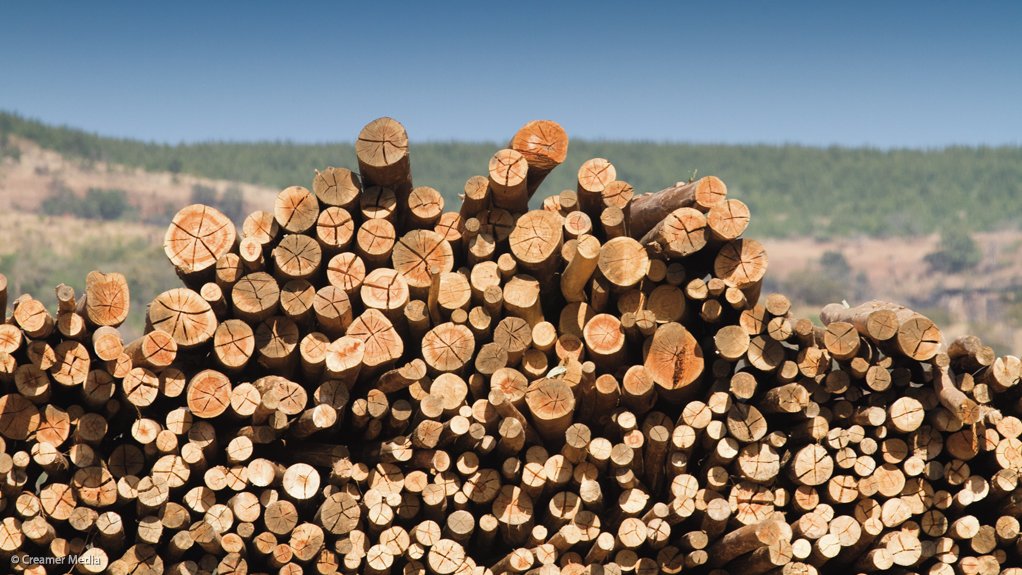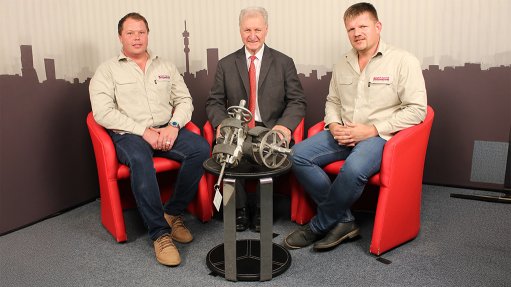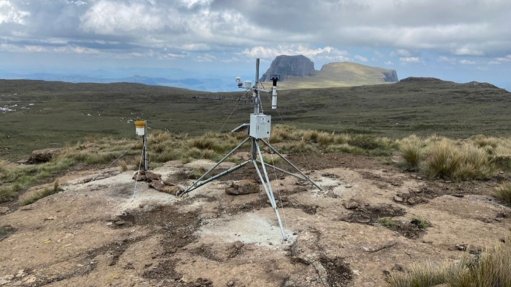Sappi posts lower profit on the back of sluggish paper demand
Pulp and paper group Sappi has reported a dip in profit to $69-million in the quarter ended March 31, compared with the profit of $188-million reported for the quarter ended March 31, 2022.
CEO Steve Binnie attributes the lower profit to the group having to curtail production at its European and North American operations to match sluggish market demand for paper and prevent excess inventory accumulation.
The group’s profitability was, therefore, negatively impacted by lower sales volumes, as well as cost inflation and operational inefficiencies associated with the commercial downtime.
On the upside, paper selling prices remained relatively stable through the quarter and were significantly above the levels in the same period of the prior year.
However, the higher average selling prices year-on-year were not sufficient to offset substantially lower sales volumes.
Binnie says Sappi has, nonetheless, managed to withstand the current market pressures, especially through its reduced debt and healthy cash reserves.
Sappi’s net debt stood at $1.2-billion as of March 31, compared with a net debt position of $1.7-billion at the end of March 31, 2022.
Earnings before interest, taxes, depreciation and amortisation (Ebitda), excluding special items, of $167-million in the quarter under review compare with Ebitda of $337-million in the prior corresponding period.
Earnings per share (EPS) amounted to $0.11 in the period under review, compared with EPS of $0.35 in the prior comparable period.
Sappi expects to spend $410-million on capital projects in the full 2023 financial year, including $70-million for the Somerset PM2 conversion and expansion project in North America.
Binnie says Sappi remains committed to its strategy of reducing exposure to graphic paper markets, while investing for growth in renewable packaging, dissolving pulp (DP) and biomaterials.
OPERATIONS
Viscose staple fibre (VSF) operating rates in China improved through the quarter with renewed economic activity following the Lunar New Year celebrations in January and the opening of the economy following the relaxation of Covid-19 pandemic restrictions.
Downstream inventories in the textile value chain dropped from the peaks of last year and clothing retail sales were better than expected. The hardwood DP market price responded positively to the improved sentiment and increased to $920/t from a low of $883/t in January.
The packaging and speciality business faced significant headwinds from elevated downstream inventories.
In South Africa, production difficulties at the Ngodwana Mill following heavy rains and challenges associated with the recent upgrade of the containerboard machine further impacted on supply.
Profitability of the South African business improved marginally year-on-year, despite significant cost inflation and slightly reduced sales volumes.
Moreover, about 17% of the Ngodwana Mill’s quarterly pulp sales volumes were shipped through the Maputo port, in Mozambique, which remains a strategic logistics risk mitigation for shipments from South Africa.
Operational challenges associated with the upgrade of the Ngodwana Mill containerboard line and severe rainfall events constrained packaging sales volumes. Ongoing poor rail service levels necessitated increased road transport to ensure reliable timber and raw material delivery.
Graphic paper markets were weaker in the quarter, compared with the same quarter of last year, with demand across all product categories lower owing to an ongoing industry-wide destocking cycle and negative consumer sentiment related to a slowing global economy.
As a result of these difficult conditions, sales volumes for packaging and speciality paper and graphic paper were 29% and 42% lower year-on-year, respectively.
While the intended sale of three European graphic paper mills did not conclude in the reporting period, reducing exposure to graphic paper markets remains a strategic imperative and Sappi will explore all options for these assets.
Collectively, these graphic paper mills contribute positively to Ebitda.
In the period, Sappi opened a bonded warehouse for DP in China, with the first shipment having been made in March.
Sappi further explains that containerboard demand softened slightly during the quarter, owing to a weaker-than-expected table grape season and a slow start to the apple season.
Sales price increases for containerboard only partially offset cost inflation, resulting in a contraction of margins for the segment.
Binnie says VSF and DP markets are recovering and demand from major customers remains healthy.
The short-term DP supply and demand landscape is expected to remain relatively balanced, however, the DP market price remains range-bound at current levels by stagnant textile fibre pricing, which would need to increase to support further DP pricing gains.
Sappi expects its margins and profitability to be impacted on by a planned maintenance shut at the Saiccor Mill, as well as lower contract pricing for certain customers.
The company is also unable to envision what will happen with paper demand and overall market conditions, but Binnie expects demand for paper to remain weak until the destocking cycle is complete.
Binnie warns that the third quarter of Sappi’s financial year is seasonally the weakest in terms of demand, which, coupled with global macroeconomic uncertainties, is likely to contribute to Ebitda for the third quarter being below that of the second quarter.
Article Enquiry
Email Article
Save Article
Feedback
To advertise email advertising@creamermedia.co.za or click here
Comments
Press Office
Announcements
What's On
Subscribe to improve your user experience...
Option 1 (equivalent of R125 a month):
Receive a weekly copy of Creamer Media's Engineering News & Mining Weekly magazine
(print copy for those in South Africa and e-magazine for those outside of South Africa)
Receive daily email newsletters
Access to full search results
Access archive of magazine back copies
Access to Projects in Progress
Access to ONE Research Report of your choice in PDF format
Option 2 (equivalent of R375 a month):
All benefits from Option 1
PLUS
Access to Creamer Media's Research Channel Africa for ALL Research Reports, in PDF format, on various industrial and mining sectors
including Electricity; Water; Energy Transition; Hydrogen; Roads, Rail and Ports; Coal; Gold; Platinum; Battery Metals; etc.
Already a subscriber?
Forgotten your password?
Receive weekly copy of Creamer Media's Engineering News & Mining Weekly magazine (print copy for those in South Africa and e-magazine for those outside of South Africa)
➕
Recieve daily email newsletters
➕
Access to full search results
➕
Access archive of magazine back copies
➕
Access to Projects in Progress
➕
Access to ONE Research Report of your choice in PDF format
RESEARCH CHANNEL AFRICA
R4500 (equivalent of R375 a month)
SUBSCRIBEAll benefits from Option 1
➕
Access to Creamer Media's Research Channel Africa for ALL Research Reports on various industrial and mining sectors, in PDF format, including on:
Electricity
➕
Water
➕
Energy Transition
➕
Hydrogen
➕
Roads, Rail and Ports
➕
Coal
➕
Gold
➕
Platinum
➕
Battery Metals
➕
etc.
Receive all benefits from Option 1 or Option 2 delivered to numerous people at your company
➕
Multiple User names and Passwords for simultaneous log-ins
➕
Intranet integration access to all in your organisation





















